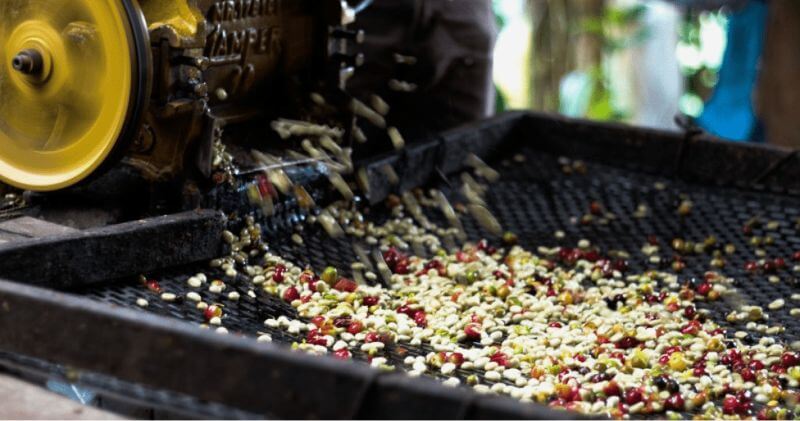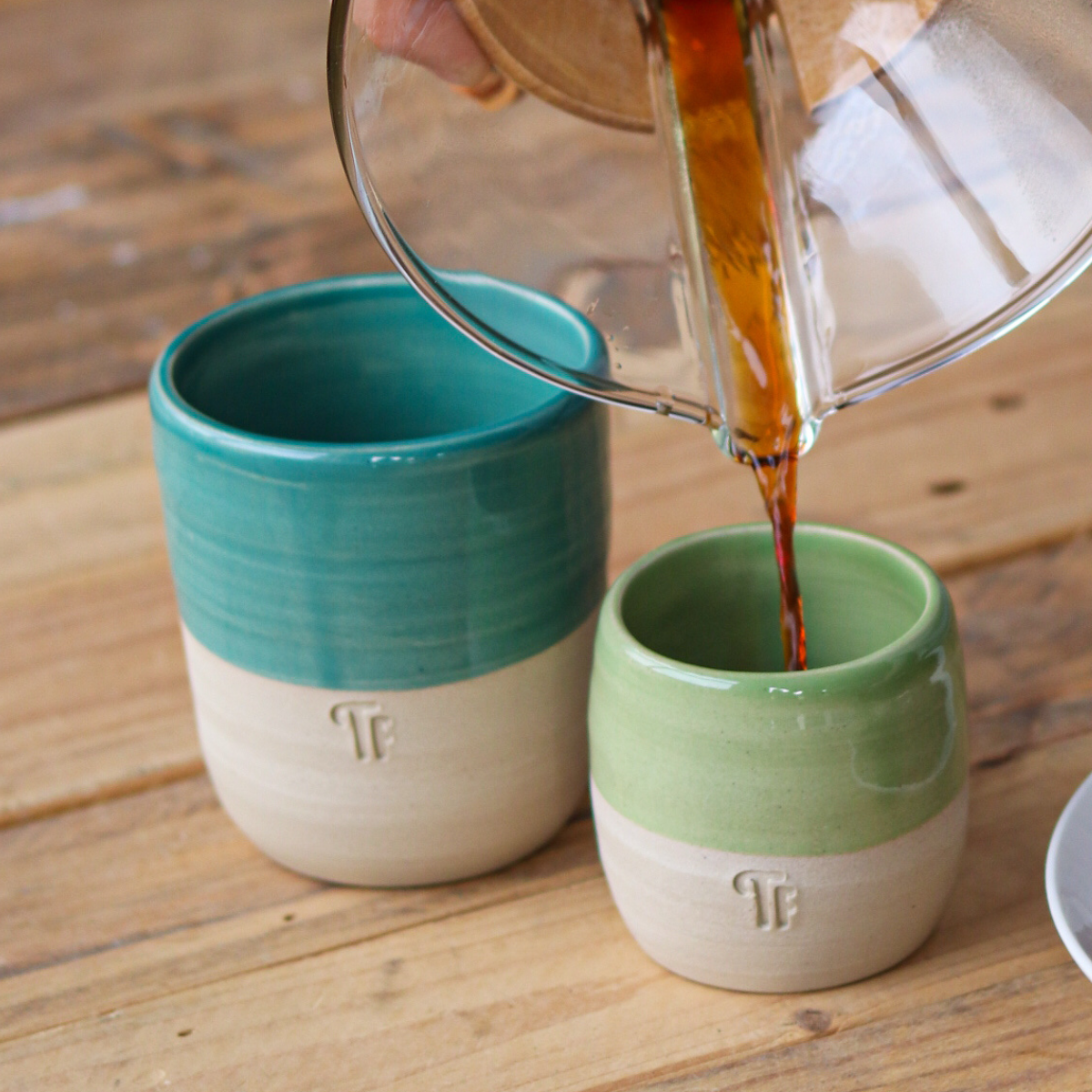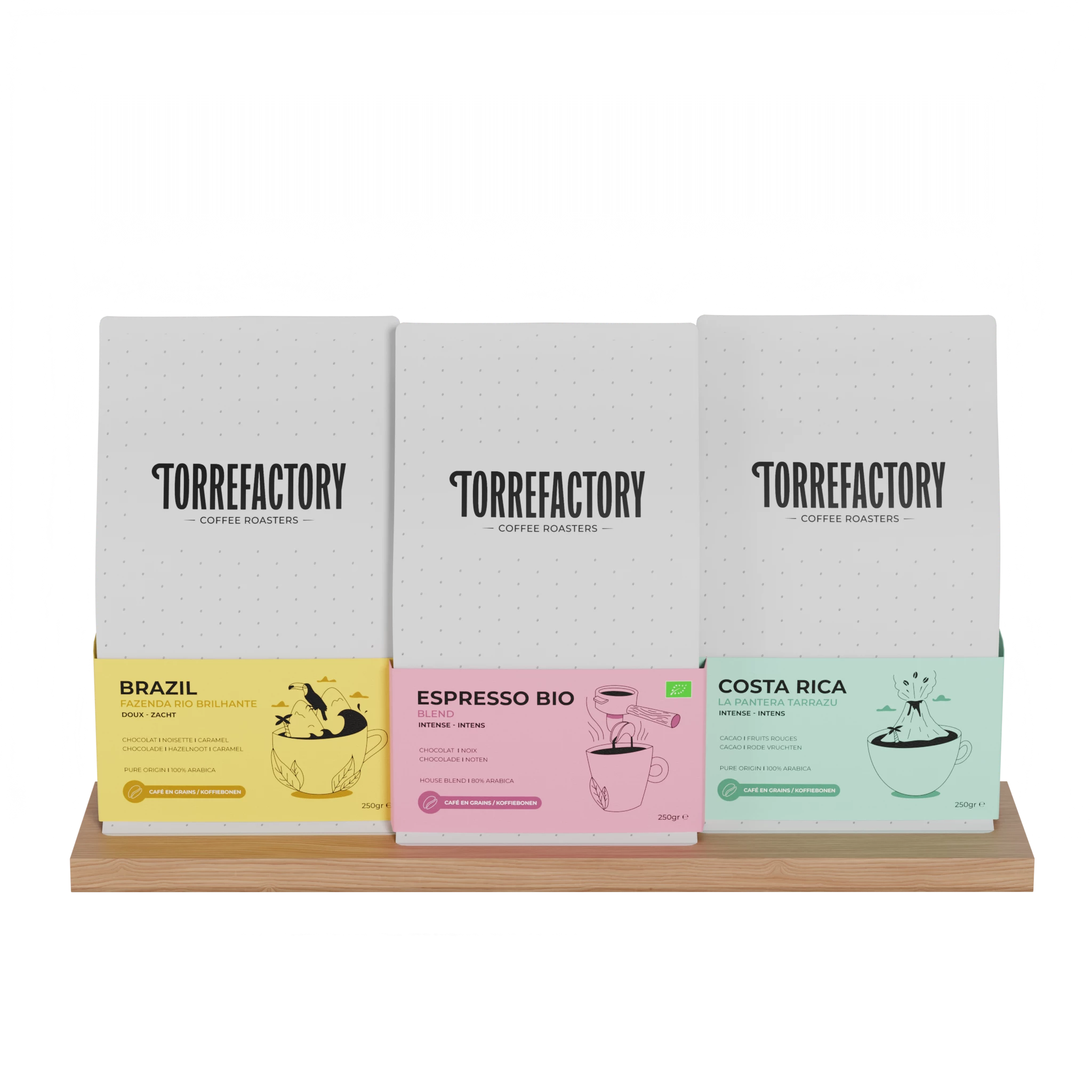Why are coffee beans roasted?
03/07/2025
Before they fill our kitchens and office breaks, coffee beans are surprisingly discreet. Without roasting, they smell almost nothing and have no taste, character or depth. It's only through roasting that these little green beans unleash their full potential. Aromas, colors, textures: it's this essential stage that transforms the bean into what we recognize as coffee.
- Before roasting: a tasteless green bean
- Roasting or the art of revealing potential
- Artisanal roasting means respecting the grain (and everything it represents)
- A palette of aromatic profiles... to explore
- Roasting, the beating heart of specialty coffee
Before roasting: a tasteless green bean
The coffee bean, as harvested, has little in common with what is poured into the grinder. Known as the "green bean", it is raw, bitter, virtually odorless and unfit for consumption as is. In its natural state, it's simply the fruit of long agricultural labor, but it's still nothing like the coffee you like to drink.
It's a bit like unbaked bread dough: all the promise is there, but nothing is ready to be enjoyed yet.
Roasting or the art of revealing potential
It's the roasting process that brings coffee to life. When green coffee beans are heated to around 180°C, a series of chemical reactions are triggered. These include the Maillard reaction, a natural phenomenon also well known from baking bread or meats, which creates complex aromatic compounds. To this can be added the caramelization of sugars, which contributes to the sweet, rounded taste of certain coffees.
Gradually, the grain changes color from green to brown, expands under the effect of heat, and then begins to "crack". This acoustic phenomenon marks a key stage called the first crack, which signals that the aromas are beginning to develop fully. It's usually at this point that we stop roasting at Torrefactory, to preserve the balance between aromatic richness, sweetness and freshness.
There's also a second, more discreet crack, which occurs with further toasting. This stage is reserved for very dark roasts, which are often more intense and bitter - a profile we choose to avoid so as not to mask the singularity of each origin.
Every second and every degree counts: if you stop roasting too early, the coffee may retain a raw acidity and a vegetal taste; too late, you run the risk of charring the subtle aromas, to the benefit of a uniform, burnt taste. That's why the roaster's role is as much sensory as it is technical: to listen, observe, smell and intervene at just the right moment to bring out the best in each bean.
It's not a simple cooking process, but a meticulous transformation, where every degree, every second, counts. The role of the roaster is to guide this evolution to reveal the best of each origin, without masking or standardizing it. We adjust the temperature curve, listen, observe and smell. It's the work of a true goldsmith, at the crossroads of science and instinct.
Roasting coffee beans is the crucial stage that transforms a raw, unflavored product into a complex, rich and balanced cup. It is a technical, sensory and identity-related act that gives coffee its unique character.
Artisanal roasting means respecting the grain (and everything it represents)
At Torrefactory, roasting coffee beans is a commitment. We call it craftsmanship because our coffees are roasted in small batches, with constant attention to freshness, precision and traceability. But this word doesn't say it all.
Artisanal roasting also means :
- Respect the origin and history of each grain,
- Reveal without betraying: preserve the floral or fruity notes of an Ethiopian coffee or the chocolaty aromas of a Brazilian coffee,
- Enhance the value of the growers' work, by not reducing their harvest to a standardized taste.
And because good coffee is also a question of ethics, we roast what we source with care, in a spirit of respectful trade and long-term partnership.
A palette of aromatic profiles... to explore
Not all coffees are alike. And not all coffees are roasted in the same way. It's this diversity that we aim to preserve.
Light to medium roasting often accentuates acidity and fruity notes. More advanced roasting develops body and caramel or cocoa flavours. But don't get us wrong: there's no dogma here. It's not a competition between light and dark roasting, but rather a question of balance between bean origin, extraction method and personal preference. At Torrefactory, we prefer roasts that bring out the aromatic richness of the coffee without overpowering it - which is why we avoid very dark profiles, which tend to standardize taste to the detriment of the uniqueness of each terroir.
To find out more about roasting types and learn how to choose the one that's right for you, you can read or re-read our March article: Types of roasted coffee: how to choose?
Roasting, the beating heart of specialty coffee
In short, coffee bean roasting is much more than a compulsory step. It's an act of creation. It's here that the bean awakens, the flavors express themselves, and the project takes on its full meaning. At Torrefactory, we roast for impact. A gustatory impact, yes. But also a human and environmental impact. Because behind every cup, there's a chain of players, a story and a transformation - from a single green bean to a coffee that's just like you.
Coffee roasting, plain and simple
Can you drink green coffee?
Not as it is! It's very bitter, indigestible and lacks the aromas of classic coffee. It is sometimes used in infusions for its properties, but it's not the same pleasure.
How long does an artisanal roast take?
Generally between 10 and 15 minutes. It's a slow, controlled cooking process, adjusted to each origin so as not to burn anything... or spoil anything.
Why doesn't my coffee always taste the same?
The taste of your coffee depends first and foremost on its geographical origin, the botanical variety of the bean, and the way it is processed after harvesting (washed, plain, honey...). These elements directly influence the aromas present in the cup. Then comes the roasting process, which plays an essential role: an adjustment to the profile or a change of method can accentuate certain notes or attenuate others. It's this subtle combination that makes each coffee - and each cup - truly unique.

 Coffees.
Coffees.  Machines.
Machines.  Boxes.
Boxes.  Teas.
Teas. 
 B Corp.
B Corp.  Vision.
Vision.  TF.
TF.  Points of sale.
Points of sale. 

